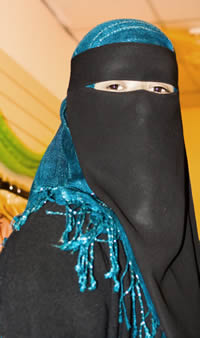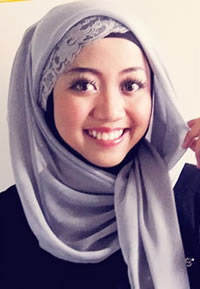Difference between Niqab and Hijab
Key difference: Niqab and hijab are two different kinds of clothing that are available to Islamic women. A niqab or ruband is a part of the sartorial hijab and covers only the face. It is a form of a veil that covers the face including the ears and the hair. A hijab or hejab actually refers to the rules of covering up. However, in the usual everyday context, the word is used to refer to a veil which covers the head.
 Niqab and hijab are two different kinds of clothing that are available to Islamic women. Islamic women wear these cloths as a form of protection. They also act as a sign of modesty. Many claim that this clothing is decreed by the Islamic religion, culture and norms. Hence, many are times women are forced to wear these clothing in front of men by the social norms, elders and peers. However, many women choose to wear these clothing to represent their own belief in their religion and culture. They are worn by Muslim women as a symbol of modesty, privacy, and morality.
Niqab and hijab are two different kinds of clothing that are available to Islamic women. Islamic women wear these cloths as a form of protection. They also act as a sign of modesty. Many claim that this clothing is decreed by the Islamic religion, culture and norms. Hence, many are times women are forced to wear these clothing in front of men by the social norms, elders and peers. However, many women choose to wear these clothing to represent their own belief in their religion and culture. They are worn by Muslim women as a symbol of modesty, privacy, and morality.
A niqab or ruband is a part of the sartorial hijab and covers only the face. It is a form of a veil that covers the face including the ears and the hair. The headpiece may even cover some, if not all of the neck and chest area. The niqab has a split in the eye area, which leaves the eyes uncovered. However, some niqabs may have a cloth mesh covering the eye area. The niqab can be attached or tied to the woman’s head by laces or by clips.

There are two main types of niqab: the half face niqab and the full face niqab. The half face niqab covers only the lower part of the face, leaving the forehead uncovered. The full face niqab covers the whole face with only slits for the eyes.
A hijab or hejab actually refers to the rules of covering up. In Arabic, the term ‘hijab’ literally means “a screen or curtain” and is used in the Qur'an to refer to a partition. Hijab also refers to a metaphysical dimension, where al-hijab refers to "the veil which separates man or the world from God”. Hijab can also be used to ‘refer to any head, face, or body covering worn by Muslim women or men that conforms to a certain standard of modesty.’
However, in the usual everyday context, the word is used to refer to a scarf which covers the head. It is also often called a Khimār. A woman is expected to start wearing a hijab at the time of puberty and must start wearing other forms of covering as she grows up. The hijab must be worn in front of any non-Mahrams, which is essentially everyone except the woman’s spouse and unmarriageable relatives.
Image Courtesy: deeps-mythoughts.blogspot.com, knightfightband.blogspot.com









Add new comment